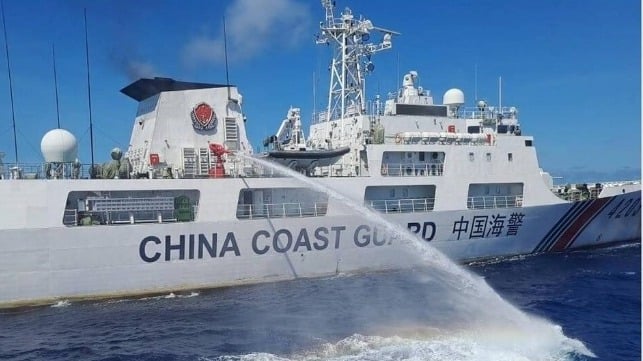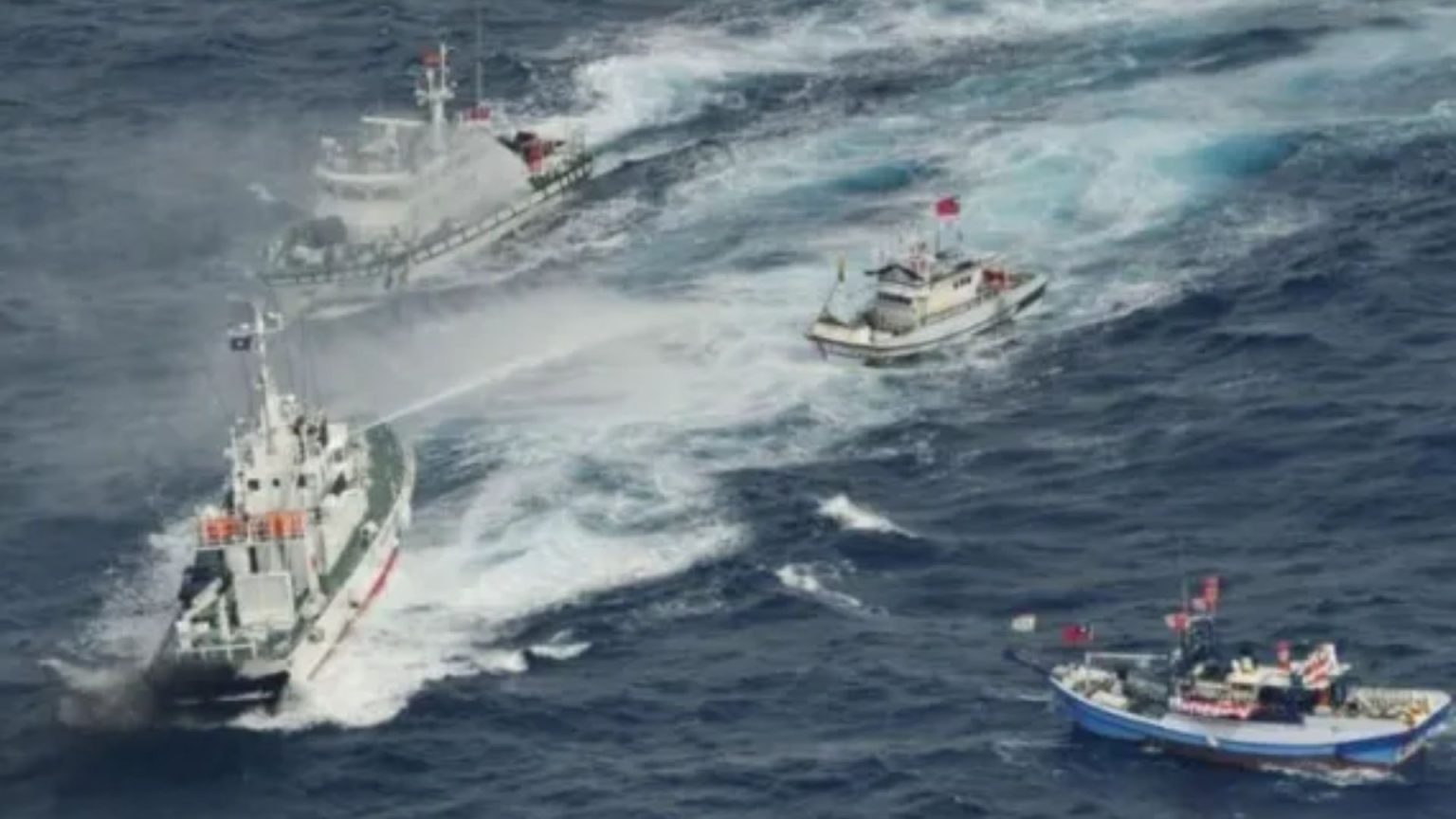Mainland China is currently dealing with growing worldwide backlash shortly after one of its coast guard boats used a water gun against a Philippine boat in the South China Sea on Saturday.
The Chinese ship was also visible in images from the Philippine Coast Guard, which was escorting the resupply boats, getting perilously close to them.
Table of Contents
Analysts say the incident escalates an already tense situation and could lead the United States and its allies to accelerate plans for joint patrols in the waterway.
On Second Thomas Shoal, a South China Sea feature in Manila’s exclusive economic area that China terms as Renai Reef and also assertions as its sovereign territory of China, a significantly smaller in size Philippine boat was being sprayed by a large Chinese Coast Guard ship as it attempted to provide supplies to a garrison of Philippine marines.

Reaction of the Philippine
A public statement from the Philippine Coast Guard was posted on their main Facebook account’s page on Saturday evening. “The Philippine Coast Guard (PCG) firmly opposes the China Coast Guard’s (CCG) reckless manoeuvres and illegal deployment of water cannons on PCG boats,” the statement read.
By Sunday, Washington, Manila’s principal ally, had denounced the actions of China and reaffirmed that it will uphold its end of the mutual defence pact with the Philippines.
The Chinese ambassador in Manila, according to Philippine President Ferdinand Marcos Jr., was presented with a diplomatic letter of complaint “along with videos and photographs on what had occurred” on the morning of Monday.
While this was going on, the Philippine Foreign Ministry and Armed Forces released a joint press statement in order to denounce China’s use of water cannons, which they called a “potentially dangerous and absolutely illegal practise” that put “the safety of the Filipino crew in jeopardy and such acts are in violation of humanitarian and international code of conduct.”
Allies of the US formed a unified front with Manila and Washington.
Australian, Japanese, and German officials referred to China’s moves as “dangerous” and “destabilising.”
The Canadian Embassy in Manila also stated that Ottawa “unreservedly criticises and condemns the risky and aggressive steps executed by the Chinese Coast Guard.”
Dispute Between Beijing and Manila
Conflict between Manila and Beijing has always been centred on the South China Sea.
Beijing asserts “indisputable sovereignty” over the majority of the islands in the 1.3 million square kilometres of the South China Sea, even those hundreds of miles from the Chinese mainland. This includes the Spratlys, also known as the Nanshas in Beijing, a group of 100 tiny islands and reefs that are also fully or partially claimed by the Philippines, Malaysia, Brunei, and Taiwan. Nevertheless, Manila refers to the region as the West Philippine Sea. In order to support its territorial claims, it purposely grounded the BRP Sierra Madre, a navy transportation ship boarded by Filipino troops, on Second Thomas Shoal in 1999.
The international Permanent Court of Arbitration in the Hague, which determined in 2016 that China lacks a legal foundation to assert historic rights to the majority of the South China Sea, supports Manila’s claims.
Beijing has disregarded the decision.
The Chinese Coast Guard’s deployment of water cannons on Saturday was not the only one; while on a mission to provide food and water for a small number of troops residing onboard the rusted vessel in November 2021, it also blasted water at Manila’s boats.
Recent Chinese activities were deemed “excessive” by the Philippine military.












